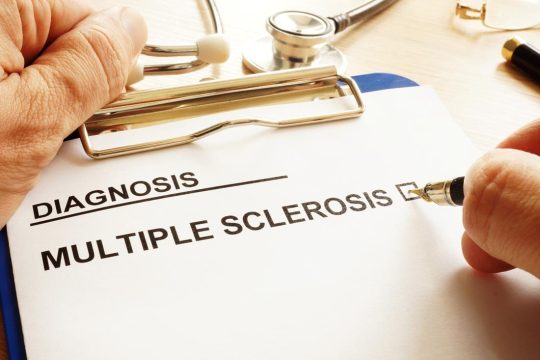Advertisment
STRIDE-1 Phase III Trial of AXS 05 meets key secondary endpoints in depression.- Axsome Therapeutics
Axsome Therapeutics announced that AXS 05 (bupropion + dextromethorphan) met key secondary endpoints in the STRIDE-1 trial by rapidly and statistically significantly improving symptoms of depression on the Montgomery-Åsberg Depression Rating Scale (MADRS), as early as Week 1 and for the overall 6-week treatment period, as compared to the active comparator bupropion in patients with treatment resistant depression (TRD). The STRIDE-1 trial did not reach statistical significance on the Week 6 primary endpoint on MADRS.
AXS 05 rapidly and significantly improved symptoms in patients with TRD as measured by MADRS averaged over the entire 6-week treatment period, a key secondary endpoint, with mean reductions of 8.6 for AXS 05 versus 6.7 for bupropion (p=0.031). The rapid onset of action with AXS 05 treatment was demonstrated with statistically significant mean MADRS reductions at Week 1, the earliest time point measured, of 5.2 versus 3.6 respectively for AXS 05 and bupropion (p=0.02), and at Week 2 of 8.0 versus 6.1 respectively for AXS 05 and bupropion (p=0.035), both time points being key secondary endpoints.
At Week 6, the primary endpoint, AXS-05 demonstrated a numerically greater improvement in MADRS, with mean reductions of 11.6 for AXS-05 versus 9.4 for bupropion (p=0.117). AXS 05 rapidly and significantly improved depressive symptoms in patients with TRD as measured by the Quick Inventory of Depressive Symptomatology-Self-Rated (QIDS-SR-16) averaged over the entire 6-week treatment period, with mean reductions of 3.3 for AXS 05 versus 2.3 for bupropion (p=0.013). Rates of remission from depression (defined as QIDS-SR-16 less or equal to 5) were statistically significantly greater for AXS-05 compared to bupropion at Week 1 (p=0.001) and at every time point thereafter, being achieved by 18.2% of AXS 05 patients compared to 8.2% of bupropion patients at Week 6 (p=0.012).
AXS 05 significantly improved cognitive function in patients with TRD as compared to bupropion, assessed using the Cognitive subscale of the Massachusetts General Hospital Cognitive and Physical Functioning Questionnaire (CPFQ) (p=0.011). Cognitive dysfunction is well documented in the different phases of major depression, and plays an important role in functional recovery from major depression. The improvement in cognitive function with AXS 05 was rapid as compared to bupropion, reaching statistical significance as early as Week 2 (p=0.01) and at every time point thereafter. The Cognitive subscale of the CPFQ assesses sharpness/mental acuity, and the ability to focus/maintain attention, to remember/recall information, and to find words. Statistical significance for the superiority of AXS 05 versus bupropion was also achieved for the entire CPFQ (p=0.014), which assesses physical in addition to cognitive functioning.
AXS 05 rapidly and significantly reduced anxiety symptoms in patients with TRD as compared to bupropion, assessed using the Hamilton Anxiety Scale (HAM-A) (p=0.009). AXS 05 demonstrated numerical improvement versus the active comparator bupropion for all other efficacy variables assessed. STRIDE-1 was a randomized, double-blind, active-controlled, multi-center, U.S. trial, in which 312 adult patients with confirmed TRD, who had failed two or three prior treatments, were randomized to treatment with either AXS 05 (45 mg dextromethorphan/105 mg bupropion) or 150 mg bupropion, twice daily for 6 weeks.





